Abstract
An X-linked dominant mutation (gyro, gene symbol Gy) in the laboratory mouse causes hypophosphatemia, rickets/osteomalacia, circling behavior, inner ear abnormalities, and sterility in males and a milder phenotype in females. Gy maps closely (crossover value 0.4-0.8%) to another X-linked gene (Hyp) that also causes hypophosphatemia in the mouse. Gy and Hyp genes have similar quantitative expression in serum phosphorus values, renal excretion of phosphate, and impairment of Na+/phosphate cotransport by renal brush-border membrane vesicles. These findings indicate that independent translation products of two X-linked genes serve phosphate transport in mouse kidney and thereby control phosphate content of extracellular fluid. The Gy translation product, unlike the Hyp product, is also expressed in the inner ear. These findings have implications for our understanding of the human counterpart known as "X-linked hypophosphatemia."
Full text
PDF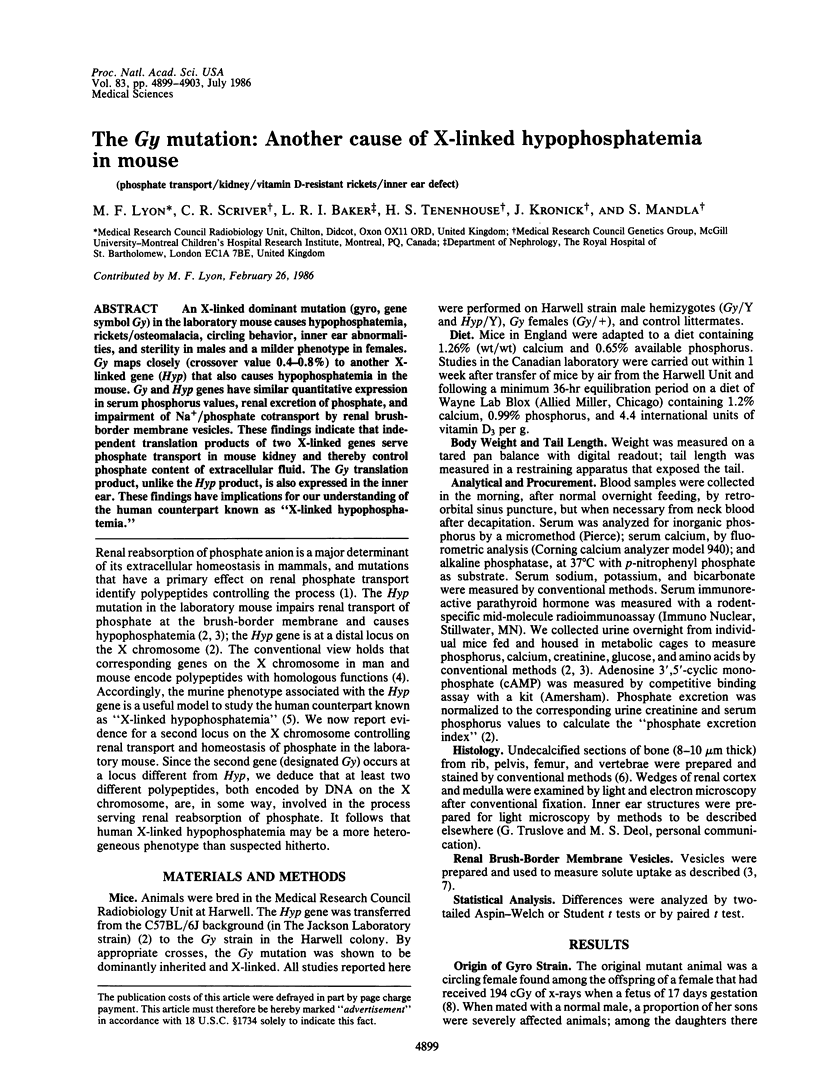
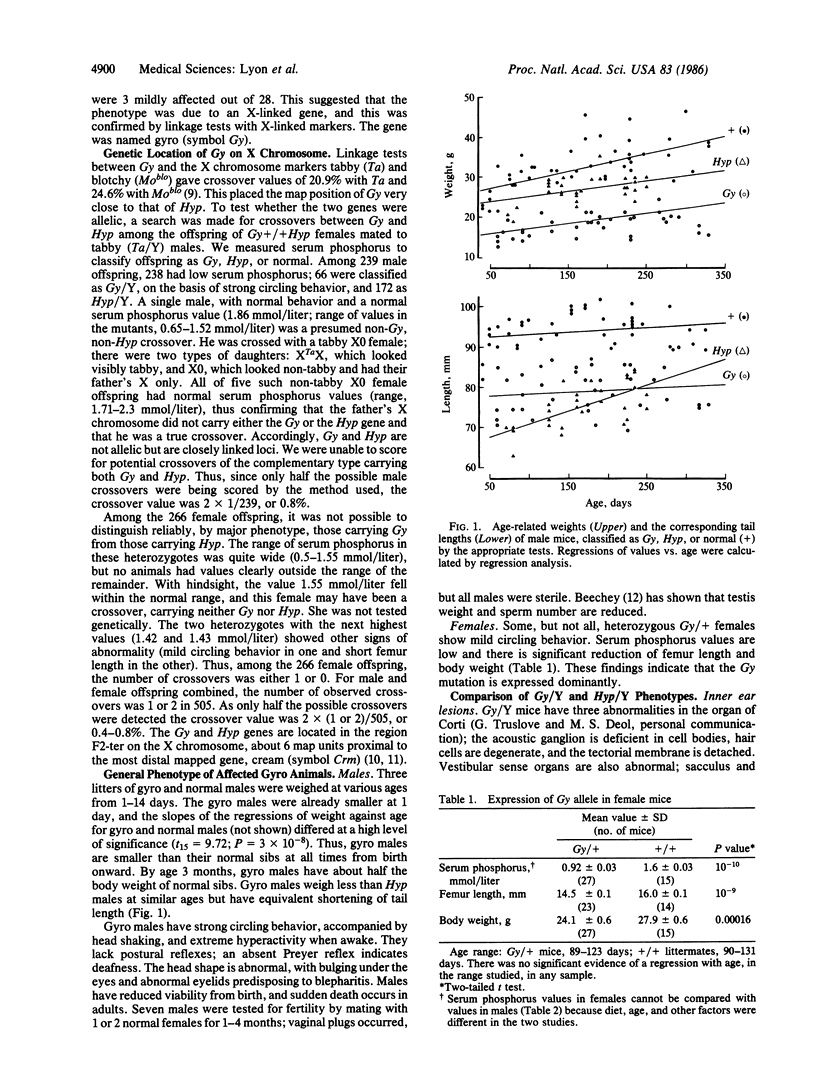
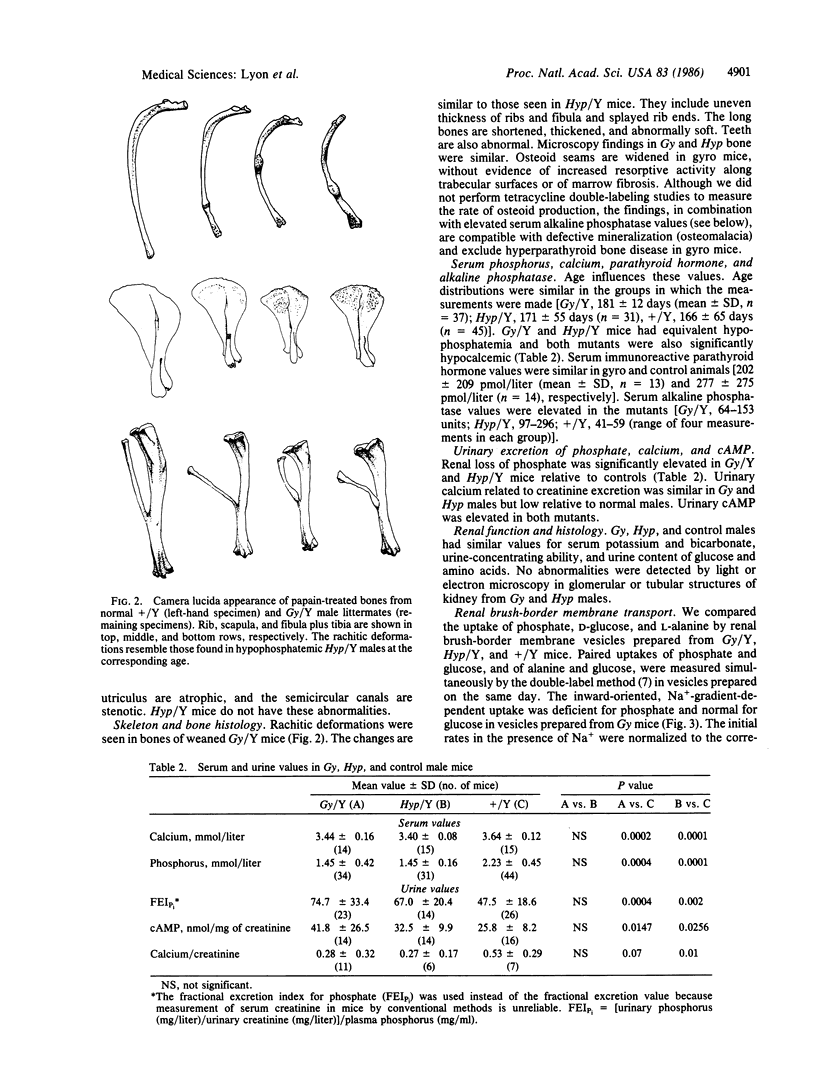
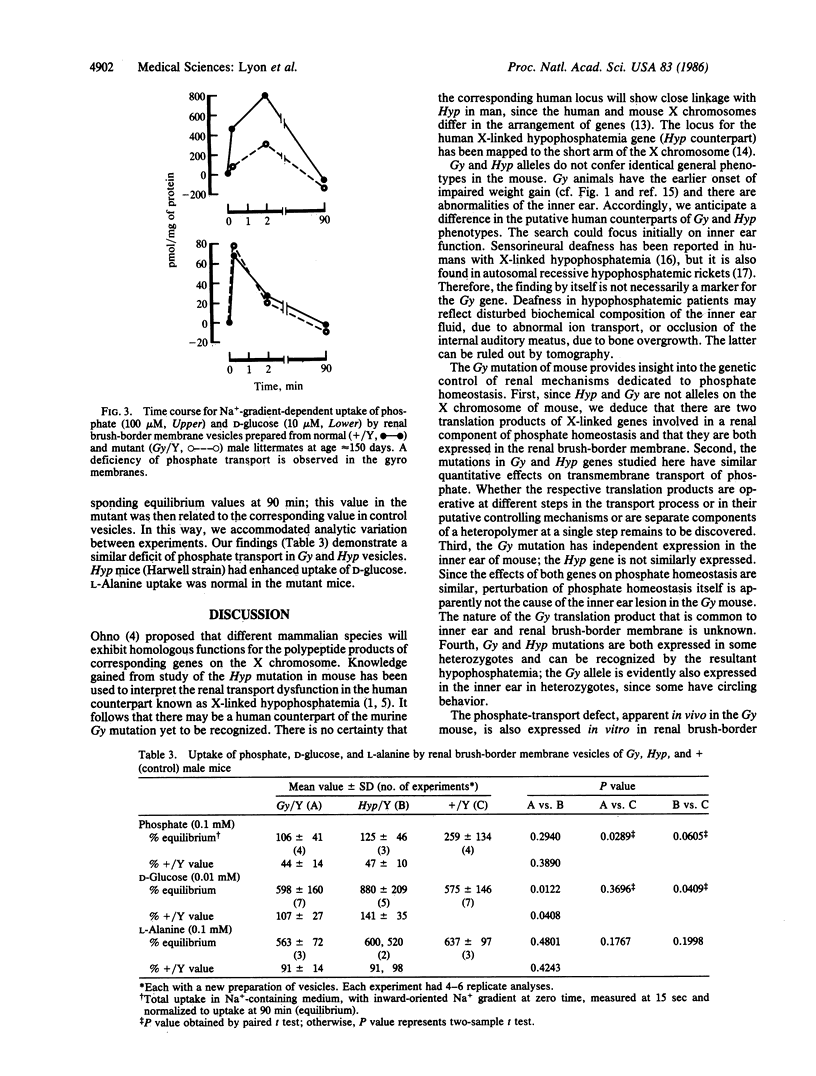
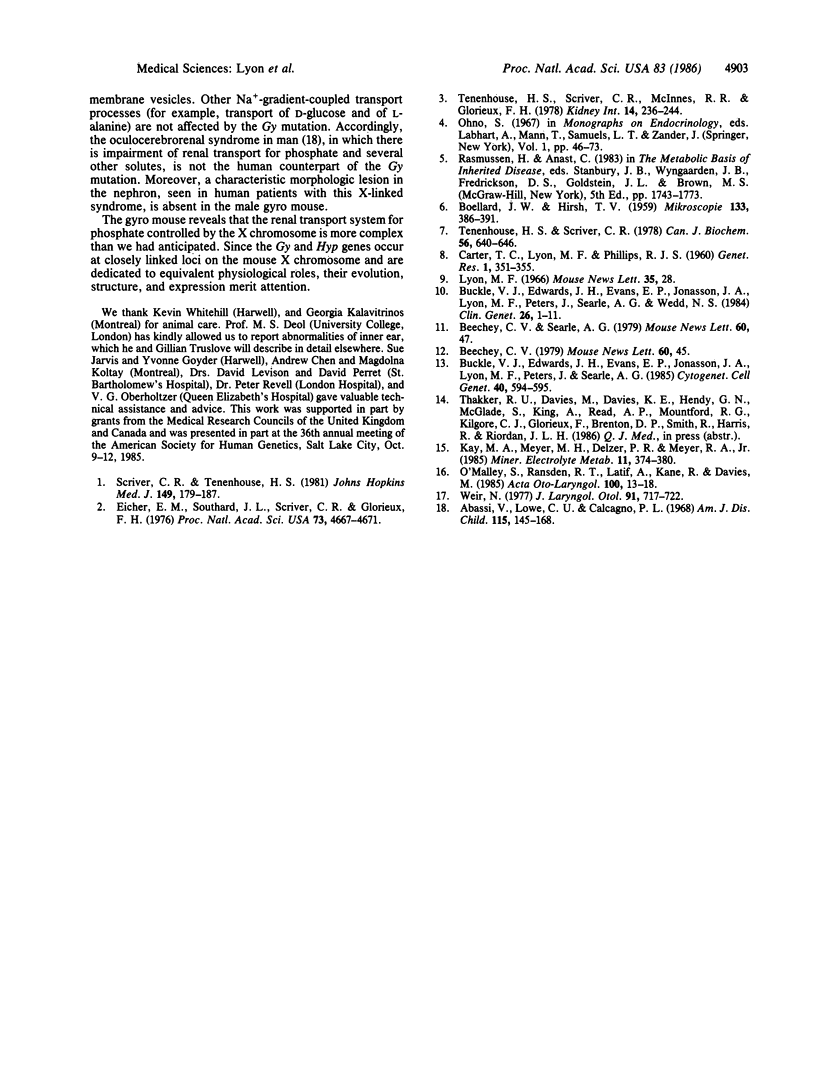
Selected References
These references are in PubMed. This may not be the complete list of references from this article.
- Abbassi V., Lowe C. U., Calcagno P. L. Oculo-cerebro-renal syndrome. A review. Am J Dis Child. 1968 Feb;115(2):145–168. doi: 10.1001/archpedi.1968.02100010147003. [DOI] [PubMed] [Google Scholar]
- Buckle V. J., Edwards J. H., Evans E. P., Jonasson J. A., Lyon M. F., Peters J., Searle A. G., Wedd N. S. Chromosome maps of man and mouse II. Clin Genet. 1984 Jul;26(1):1–11. doi: 10.1111/j.1399-0004.1984.tb00780.x. [DOI] [PubMed] [Google Scholar]
- Eicher E. M., Southard J. L., Scriver C. R., Glorieux F. H. Hypophosphatemia: mouse model for human familial hypophosphatemic (vitamin D-resistant) rickets. Proc Natl Acad Sci U S A. 1976 Dec;73(12):4667–4671. doi: 10.1073/pnas.73.12.4667. [DOI] [PMC free article] [PubMed] [Google Scholar]
- Kay M. A., Meyer M. H., Delzer P. R., Meyer R. A., Jr Changing patterns of femoral and skeletal mineralization during growth in juvenile X-linked hypophosphatemic mice. Miner Electrolyte Metab. 1985;11(6):374–380. [PubMed] [Google Scholar]
- O'Malley S., Ramsden R. T., Latif A., Kane R., Davies M. Electrocochleographic changes in the hearing loss associated with X-linked hypophosphataemic osteomalacia. Acta Otolaryngol. 1985 Jul-Aug;100(1-2):13–18. doi: 10.3109/00016488509108581. [DOI] [PubMed] [Google Scholar]
- Scriver C. R., Tenenhouse H. S. On the heritability of rickets, a common disease (Mendel, mammals and phosphate). Johns Hopkins Med J. 1981 Nov;149(5):179–187. [PubMed] [Google Scholar]
- Tenenhouse H. S., Scriver C. R., McInnes R. R., Glorieux F. H. Renal handling of phosphate in vivo and in vitro by the X-linked hypophosphatemic male mouse: evidence for a defect in the brush border membrane. Kidney Int. 1978 Sep;14(3):236–244. doi: 10.1038/ki.1978.115. [DOI] [PubMed] [Google Scholar]
- Tenenhouse H. S., Scriver C. R. The defect in transcellular transport of phosphate in the nephron is located in brush-border membranes in X-linked hypophosphatemia (Hyp mouse model). Can J Biochem. 1978 Jun;56(6):640–646. doi: 10.1139/o78-096. [DOI] [PubMed] [Google Scholar]
- Weir N. Sensorineural deafness associated with recessive hypophosphataemic rickets. J Laryngol Otol. 1977 Aug;91(8):717–722. doi: 10.1017/s0022215100084255. [DOI] [PubMed] [Google Scholar]


